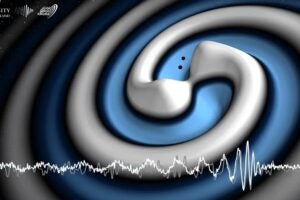AUSTIN, Texas—The University of Texas at Austin is placing 20 automated external defibrillators (AEDs) in campus police cars and other UT Austin facilities. The devices deliver an electric shock to restore normal functioning of the heartbeat. Their presence on campus could shave at least one to three precious minutes off the time it takes to respond to victims of heart attacks or other incidents of cardiac arrest, substantially improving survival rates.
Erle Janssen, director of UT Austin Environmental Health and Safety, said: “We’ve seen a jump in technology for preventing sudden-death heart attacks. With these new automated devices, we have a better chance of saving victims than if we relied on the first responders. Janssen said Rice University has implemented an AED program, “and we know they’ve already saved at least one professor.”
To be successful, AEDs must be used as rapidly as possible. The chances of surviving a heart attack or other form of cardiac arrest drop by about ten percent with each minute that passes between the time the heart stops beating and defibrillation begins, according to the American Heart Association.
Jeff Rubin, the AED project manager with UT Austin Environmental Health and Safety, is overseeing the AED training of about 150 UT Austin employees, who also must be trained in CPR or cardio-pulmonary resuscitation.
“Sudden cardiac arrest is one of the few emergencies where a minute or two can actually mean the difference between life and death,” Rubin said. “In sudden cardiac arrest, early CPR and rapid defibrillation are vital.”
Although the main UT Austin campus is only minutes away from medical response teams at Austin Emergency Medical Services and the Austin Fire Department, campus police or other trained personnel can get to the scene of a medical emergency much faster. This is especially true given Austin’s burgeoning traffic problems.
UTPD Assistant Chief Rollin Donelson said: “Instead of us going to a scene, assessing the situation and calling EMS, we cut that initial time frame down greatly. The defibrillators are so automatic, we can serve our clients much better and increase the chances that damage done by the heart attack will be lessened.”
AEDs may only be operated through a program under the supervision of a physician. This program will be operating under the authority of Dr. Edward M. Racht, medical director of the Austin/Travis County Emergency Medical Services (EMS).
Racht explained that the normal heartbeat involves a rhythmic and regular electrical activity on the cellular level. “In patients with an episode of ventricular fibrillation, the normal electrical impulse transforms to a chaotic, irregular firing of cells in the heart. In essence, it’s an electrical storm. Because it’s so disorganized, the electricity doesn’t allow the heart to contract normally to move blood forward. The pump is busted.”
Racht said the AED acts “to reorganize the electrical activity in the heart so that the heart can beat on its own.” He said AEDs are used in combination with CPR techniques because “to resuscitate the heart, you literally need an electrician and a plumber.”
AEDs come in bright yellow plastic boxes about the size of a large purse. Visual cues and step-by-step verbal instructions, delivered aloud by a recorded voice, are provided to the trained operator of the machine. Racht said the AED analyzes heart rhythm and varies instructions based on that information. Only if necessary will an electric shock be delivered through the device in an attempt to start the heart going again.
Racht said the program is based on cooperation between the UT Austin and the Austin/Travis County community. “This is one of the tremendous examples of how effective we can be if we focus on patient care instead of individual agencies or boundaries,” Racht said. He also cited Rubin as the “driving force” behind the program: “He identified that the need existed, rallied the troops behind the concept and orchestrated the marriage.”
“This program is an actual extension of Austin’s EMS,” Janssen said. “We are providing the training, the education and the tools to expand emergency medical services into the workplace under Dr. Racht’s authority and jurisdiction.”
UT Austin departments with AEDs — chosen based on remote location, type of activity or high use by visitors and the general public — include the Joe C. Thompson Conference Center, the Frank C. Erwin Jr. Special Events Center, the Lyndon Baines Johnson Library and Museum, the Texas Union, the Texas Memorial Museum, the Department of Physical Plant, the Hal C. Weaver Power Plant, the J.J. Pickle Research Campus, the Marine Science Institute at Port Aransas and the McDonald Observatory.
For more information, contact UT Austin Environmental Health & Safety Director Erle Janssen at (512) 471-3511, AED project manager Jeff Rubin at (512) 606-8516 (digital pager), Austin/Travis County EMS System Medical Director Dr. Ed Racht (512) 448-8380 or the Office of Public Affairs at (512) 471-3151.



